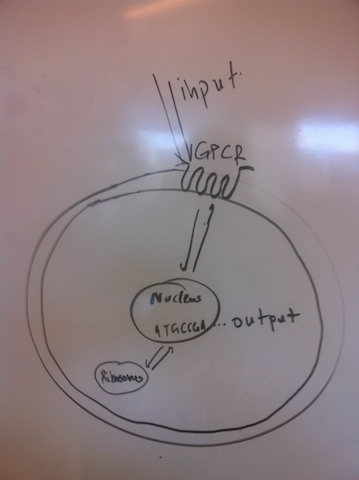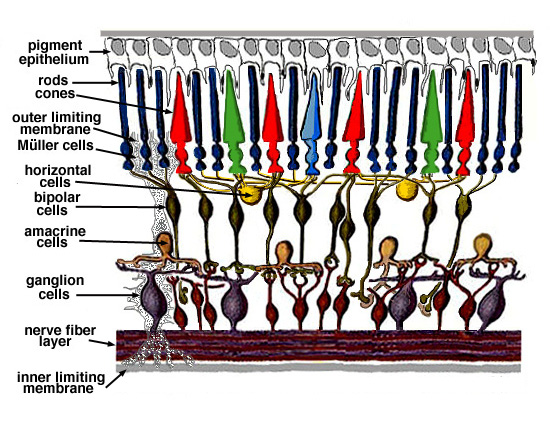Potential Project 1: GPCR electronics

G protein-coupled receptors (GPCRs), also known as seven-transmembrane domain receptors, constitute a large protein family of receptors that sense molecules outside the cell and activate inside signal transduction pathways and, ultimately, cellular responses.
My project would be to design a large scale sensing apparatus that will be based on the function of GPCR's.
This device will be an immitation of a human cell expressing a kind of GPCR's in its membrane. The nucleus of the cell will act as a server and each G-protein as a client, as far as communication is concerned. The receptor proteins will take input from the invironment, do local calculations and then broadcast the data through the G-Protein.


